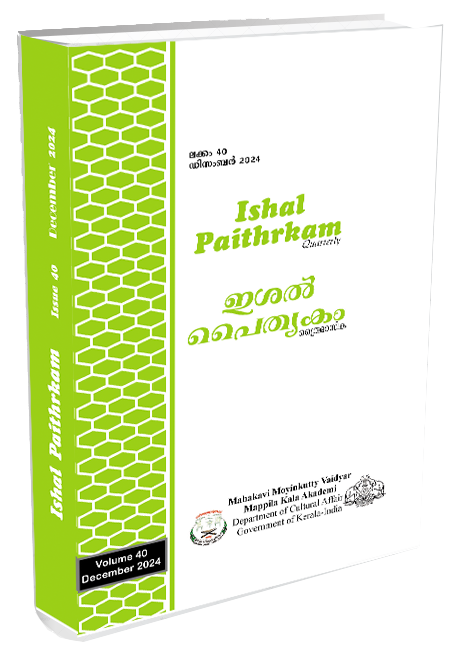Towards Greater Cooperation: Re-Energizing India’s Act East Policy for Southeast Asia
Abstract
The paper aims to illustrate the development of India’s Look East policy into Act East Policy, Act East and North Eastern Regions, the role of China in the region and the challenges and prospects. Regional cooperation was built in south-east Asia by “ASEAN WAY” based on consultation and consensual decision making and flexibility rather than starting with ambitious political commitments. After Indian independence, Jawaharlal Nehru remarked that “India was the gateway to both west and south East Asia and therefore inevitably came into the picture.” The independence and security of South East Asia served to strengthen India’s own independence and security and any serious setbacks there, constituted a political threat to India too. But, the prominence to this region in India’s international relations was given a long back later. The “Look East policy” of India was launched by former Prime Minister P.V. Narasimha Rao in 1991. This was mainly exercised through India-ASEAN ties. Later in 2014, prime minister Narendra Modi, transformed “Look East into Act East policy”. Terming Look East into Act East, the main aims of this policy was to revive political ties, strengthen economic linkages, and forge regional security and ensure strategic cooperation with South East Asia, for which the North Eastern region serves as the gateway. This foreign policy has given geographic proximity, socio-cultural and historical ties with South Eastern countries. This policy is described as a comprehensive and multi–pronged effort to forge strategic alliances with several individual nations and foster constructive ties with the Association of South East Asian Nations (ASEAN). How is geopolitically significant in Southeast Asia to India's foreign policy? What are the geopolitical factors behind the genesis and transformation of the Look East Policy into the Act East Policy? How well is China pursuing its interests in Southeast Asia? How the changing power politics affect the relations between these nations? These are some of the questions that I will seek to answer through this paper.
Downloads
References
References
Abhijit, Singh, (2016). India’s Look East Policy Takes on Maritime Edge, World Politics Review, www.worldpoliticsreview.com/.../indias-look-east-policy-takes-on-maritime-edge
Ahmed, Zulaqar, Ahmed (2019). India’s Act East Policy and the North East Region. International Journal of Research in Social Sciences. 19 (9).
Amitendu, Palit, (2016). India’s Act East Policy and Implications for Southeast Asia, Southeast Asian Affairs. 5(2).
Barua, Taz (2020). The Look East Policy/Act East Policy-driven Development Model in Northeast India. Journal of International Relations. 24 (1).
Chakraborty, Debashis & Chakraborty, Anusree (2018). India’s act east policy, Walking the Talk . MPRA paper. University library of Munich
Chietigj, Bajpaee (2017). Dephasing India's Look East/Act East Policy. Contemporary Southeast Asia. 39 (2).
Connell, Raewyn, Dados, Nour. (2014). Where in the World Does Neoliberalism Come from?: The Market Agenda in Southern Perspective. Theory and Society 43(2)
Debashis, Gurudas, Joshusha, Thomas.C(Eds.)(2016). Look East to Act East policy : Walking the Talk. MPRA Paper .University of library of Munich.
Eekelen, van, Willem (1964). Indian Foreign Policy and the Border Dispute with China: A New Look at Asian Relationships. Nijhoff Classics in International Law, 5(2).
Giovanni, Capanelli and Masahiro, Kawai, (2014). The Political Economy of Asian Regionalism. Springer and ADBI Institute
Hartono, Christian, Arianto (2021). The Impact of Geopolitical Influence on Regional Cooperation and Integration in East Asia. Asian Journal of Comparative Politics. 7(2).
Harvey, James (2020). China’s belt and road initiative economic prosperity or Hegemony?,Gloal South Development Magazine. 2(3).
Hazarika, Borah, Obja, Patgiri Rubul(Eds.)(2016). Locating Northeast in India’s neighbourhood policy, India’s Quarterly. Sage publication,72(9).
Hoapoik, Thongkholal (2011). India’s Look East Policy: Its evolution and approach. South Asian Survey. 18(2).
Jaffrelot, Christophe (.2003). India’s Look East Policy: An Asianist strategy in perspective. India review 2(2).
Jha, Shank, Prem (2021). The politics behind china’s belt and road initiative. The Wire. 3(21).
Joseph, Sarah . (2007). Neoliberal Reforms and Democracy in India. Economic and Political Weekly 42(31).
Kate Sullivan de Estrada and Nicola Leveringhaus https://thewire.in/external-affairs/india-china-nsg-global-nuclear-order
Lintao, Yu, (2017). A New Pipeline Connects China and Myanmar. Beijing Review
Longkumer, Purnungba (2021). New Dimapur-Zuzba Railway Line: Drilling Tunnels for Completion. Eastern Mirror Publication.
Muni, S.D, (2011). India's 'Look East' Policy: The Strategic Dimension. ISEAS Working Paper. No. 121.
Naidu, G.V.C (2004). Whither the Look East Policy: India and Southeast Asia. Institute for Defence Studies and Cooperation. 28(2).
Panchali, Saikai, (Eds.)(2016). Embracing India’s Northeast in BIMSTEC- Experimenting the GMS ECP model. Routledge
Parathasarathy (2019). New Security Challenges in Northeast. The Hindu-business line, April (17).
Pattanaik, Jajati (2018).Look east policy and India’s NORTHEAST Region: Status of cross border trade and connectivity. in Das Guru Das and Joshua Thomas(Eds.),Look East policy: Implications for Northeast. Routeldge
Rana, Krishna(Eds.)(2016).Sub-Regional Diplomacy: An Imperative of our times. Routledge
Saikai, Panchali(Eds..)(2016).Embracing India’s Northeast in BIMSTEC-experimenting the GMS ECP model. Routledge
Sarma, Athul, Choudhary, swasati(Eds.)(2017). Mainstreaming the Northeast in the India’s Look East Policy and Act East policy. Palgrave Macmilian.
Sayantani Sen Majumdar, The North- East Steering India’s Look East Policy”. (http://www.globalindiafoundation.org/look%20east%20new.pdf)
Singh, Pal, Gurinder (2023). Integrating India’s North Eastern Region in the Backdrop of Act East Policy, IDSA.
Singh, Bikash (2018.). “Advantage Assam: Global Investors’ Summit: Assam Gets Rs. 65,186 Crore Investment Commitments on Day 1.” The Economic Times, February 03. Available at https://economictimes.indiatimes.com/news/politics-and-nation/global-investors-summit-assam-gets-rs-65186-crore-investment-commitments-on-day-1/articleshow/62770223.cms?from=mdr
Sreeradha, Datta (2020). Act East Policy and Northeast India. Vitasta publications
Sumathi Bala India is a rising force in Southeast Asia as region seeks to counter China’s dominance https://www.cnbc.com/2023/08/14/india-is-rising-force-in-southeast-asia-that-could-counter-china-dominance.html
Thingnam. Kisan. Singh (Eds.)(2015). Look east policy and Northeast : Polemics and perspectives. Centre for Alternative Discourse.
Ton, That, Thien (1963). India and South-East Asia 1947-1960. Libraine Droz
Yogendra, Singh, (2007).India’s Myanmar Policy: A Dilemma between Realism and Idealism, IPCS (Special Report), No. 37
Saha, Premesha (2023). India’s growing strategic footprint in the Indo-Pacific, https://www.orfonline.org/expert-speak/indias-growing-strategic-footprint-in-the-indo-pacific
Vashisht, Pankaj (2023). Indo-Pacific Strategies: What Do They Entail for India?. Journal of Indo-Pacific Affairs, Discussion Paper # 274, https://www.ris.org.in/sites/default/files/Publication/DP%20274%20%20Pankaj%20Vashisht.pdf
Ladwig, Walter (2024).The Indo-Pacific in Indian Foreign Policy, https://www.rusi.org/explore-our-research/publications/policy-briefs/indo-pacific-indian-foreign-policy
Downloads
Published
Issue
Section
License
Copyright (c) 2025 ISHAL PAITHRKAM

This work is licensed under a Creative Commons Attribution-NoDerivatives 4.0 International License.

